For families looking for a healthy and satisfying meal, stone bowl pho is a perfect choice. This traditional Vietnamese dish is not only rich in flavor but also packed with nutrients, making it ideal for children and health-conscious parents. At AKFood, we bring over 26 years of experience in creating high-quality Vietnamese cuisine. By combining authentic recipes with modern convenience, we ensure that every bowl of stone bowl pho offers a delicious, nutritious, and culturally rich dining experience for busy households.
What is Pho?
Pho is more than just a popular dish in Vietnam – it’s a symbol of cultural pride and a trusted source of comfort and nutrition for generations. This traditional noodle soup blends rich, aromatic broth with soft rice noodles, fresh herbs, and meat or chicken, creating a well-balanced meal that is both filling and nutritious. Its roots date back to the early 20th century, where it started as simple street food and gradually evolved into a beloved national dish. Making pho the traditional way takes time and care, especially the broth, which is simmered with spices like star anise, cinnamon, and cloves for many hours to bring out deep, complex flavors.
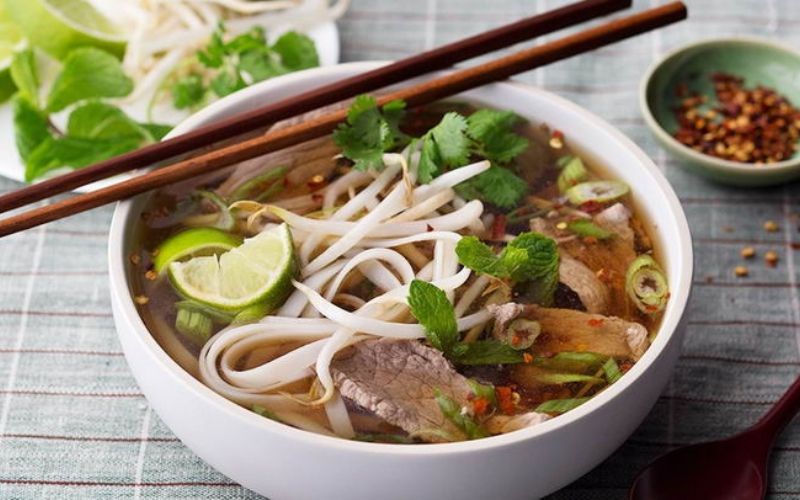
Today, pho continues to be a favorite among Vietnamese families thanks to its health benefits and flexibility. The clear broth is packed with protein and essential nutrients that support children’s growth, while the noodles provide energy through easy-to-digest carbs. Fresh herbs add important vitamins, making each bowl a complete, wholesome meal. Parents also appreciate how customizable pho is – they can easily adjust ingredients to fit their children’s tastes and dietary needs, making it a practical and meaningful choice for modern family meals.
More infomation: Vegetarian Pho: A Flavorful Adventure
What is Stone Bowl Pho?
Stone bowl pho offers a fresh twist on the traditional dish by using superheated stone bowls, turning a simple meal into a fun and memorable experience. Inspired by Korean cooking but adapted for Vietnamese pho, this method creates a sizzling effect when hot broth is poured into the bowl. The sight, sound, and steam of stone bowl pho make it especially exciting for children, turning an ordinary meal into an interactive moment that sparks curiosity and encourages them to explore new tastes.

For families, stone bowl pho is both practical and enjoyable. The stone bowls keep the soup hot for much longer, which is helpful for busy households where everyone might eat at different times. This makes it easier for parents to manage meal times, especially with younger children. The special presentation also adds a festive touch, making stone bowl pho a great choice for family gatherings or introducing kids to Vietnamese culture in a fun and engaging way.
What Makes Stone Bowl Pho Unique?
The distinctive characteristics of stone bowl pho set it apart from traditional serving methods, offering multiple benefits that enhance both the culinary experience and practical dining considerations. Understanding these unique features helps parents appreciate why this serving style has become increasingly popular among families seeking both nutrition and entertainment value in their meals.
Retains Heat
The superior heat retention capability of stone bowls represents one of the most significant advantages for family dining. Unlike ceramic or metal bowls that quickly lose temperature, heated stone maintains optimal serving temperature for 15-20 minutes, ensuring that every family member can enjoy their stone bowl pho at the perfect warmth.
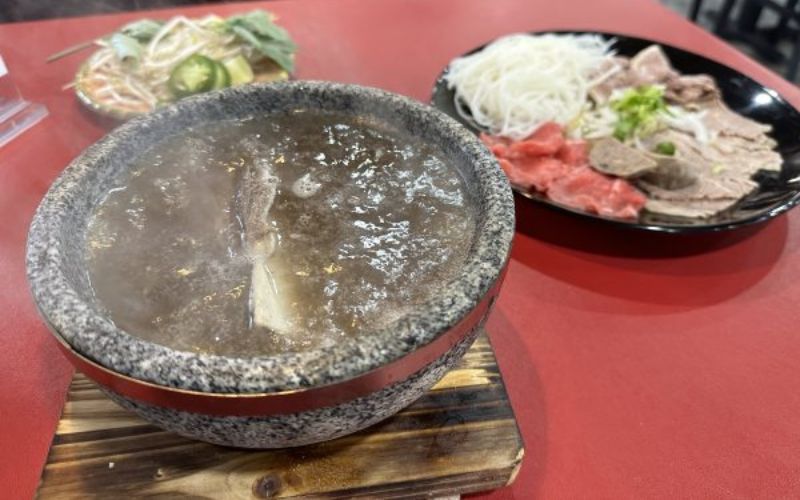
This extended heat retention proves particularly valuable for families with young children who may eat slowly or need assistance during meals. Parents no longer need to worry about their child’s food becoming cold while helping siblings or managing other dinner-time responsibilities. The consistent temperature also ensures that the flavors remain vibrant and the aromatic qualities of the herbs and spices continue to develop throughout the meal.
Continued Simmering
The ongoing cooking process that occurs in heated stone bowls creates a dynamic dining experience where flavors continue to develop and intensify throughout the meal. This gentle, continued simmering effect allows tougher ingredients to become more tender while enabling spices and herbs to release additional aromatic compounds.

For families incorporating vegetables into their stone bowl pho, this continued cooking process helps soften fibrous vegetables, making them more appealing and digestible for children. Parents often find that vegetables their children typically reject become more palatable when prepared this way, as the extended cooking time mellows strong flavors and creates more appealing textures.
Authentic Experience
Stone bowl pho provides families with an authentic cultural experience that goes beyond simple nutrition, offering opportunities for education and cultural appreciation. The traditional cooking vessel connects diners with centuries-old culinary wisdom while creating memorable experiences that children associate with positive cultural exploration.

This authenticity aspect proves valuable for families interested in expanding their children’s cultural awareness through food. The unique serving style naturally prompts questions and discussions about Vietnamese culture, cooking traditions, and the importance of family meals in different societies. These conversations help children develop global awareness and appreciation for cultural diversity.
Texture Enhancement
The unique cooking environment created by heated stone bowls significantly improves the textural elements of pho, creating more engaging and appealing meals for children and adults alike. The continued gentle heat helps achieve optimal noodle texture while maintaining the integrity of fresh ingredients.
Rice noodles in stone bowl pho achieve an ideal balance between tenderness and structure, avoiding the mushiness that can occur with traditional serving methods. This improved texture proves particularly important for children who may be sensitive to food textures or reluctant to try new foods. The appealing mouthfeel encourages continued eating and positive associations with the meal.
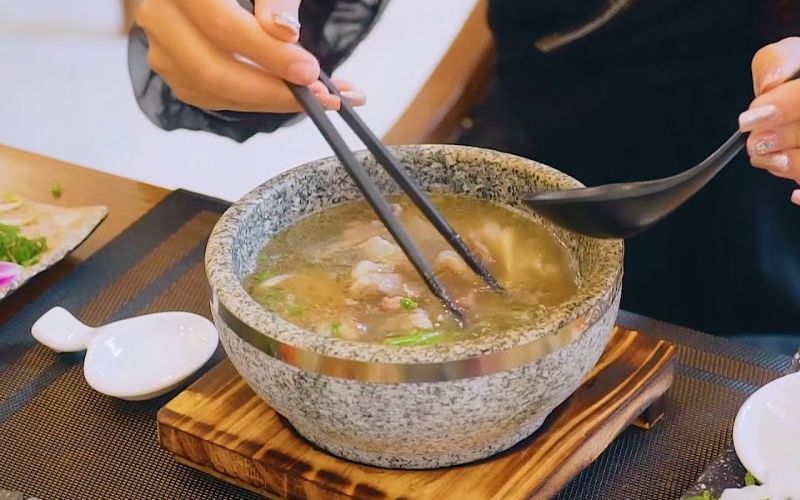
Fresh herbs and vegetables maintain their crispness longer in stone bowls, providing satisfying textural contrast throughout the meal. This textural variety helps keep children engaged with their food and encourages them to explore different ingredients rather than focusing only on familiar components.
Temperature Control
Stone bowl pho offers a safer dining experience for families, especially those with young children. Unlike metal bowls that can become too hot or ceramic bowls that cool down quickly, stone bowls provide steady and gentle heat. This natural temperature control helps reduce the risk of burns and keeps the meal warm without making it unsafe to touch.

Parents value how stone bowl pho maintains a consistent temperature without sudden changes, allowing children to enjoy their food safely and comfortably. This steady heat also keeps the pho in a safe temperature range, which is important for preventing bacteria growth—especially for young kids or elderly family members who may be more sensitive to food safety issues.
More information: Lang ta beef Pho – Instant Beef Pho
The Ingredients of Stone Bowl Pho
Understanding the carefully selected ingredients that comprise stone bowl pho helps parents appreciate both the nutritional value and cultural significance of this remarkable dish.
- Premium bone broth base: The heart of stone bowl pho lies in its rich broth, made from high-quality beef or chicken bones chosen for their collagen and marrow. These bones are carefully prepared—blanched and roasted—to create the deep, authentic flavors that define traditional pho.
- Traditional spice blend: Stone bowl pho features a fragrant spice blend of star anise, cinnamon, black cardamom, fennel seeds, and cloves. These spices not only shape pho’s signature aroma but also offer health benefits like digestive support, anti-inflammatory effects, and immune-boosting phytonutrients.

- Fresh rice noodles: Fresh rice noodles are the main source of energy in stone bowl pho, offering easy digestion—ideal for kids and active family members. Their gluten-free nature makes them suitable for those with wheat allergies or celiac disease, and good-quality noodles stay firm even in hot stone bowls.
- Diverse protein options: Stone bowl pho offers a variety of protein choices like beef, chicken, or seafood, each with its own health benefits. Beef is rich in iron and vitamin B12, chicken provides lean protein, and seafood adds omega-3s that support brain development in children.
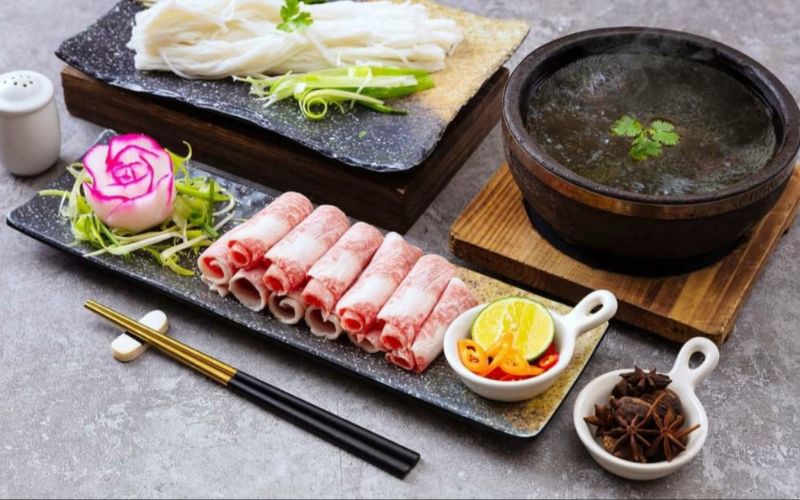
- Nutrient-rich fresh herbs: Fresh herbs like cilantro, Thai basil, mint, and green onions give stone bowl pho its signature flavor and boost its nutrition. They provide vitamin C, folate, and antioxidants, while their vibrant taste encourages kids to enjoy more vegetables in their meals.
- Crunchy bean sprouts: Bean sprouts bring a satisfying crunch and extra nutrition to stone bowl pho. They’re low in calories but rich in vitamin C, protein, and fiber, supporting digestion and nutrient absorption—plus their texture makes them especially appealing to kids.
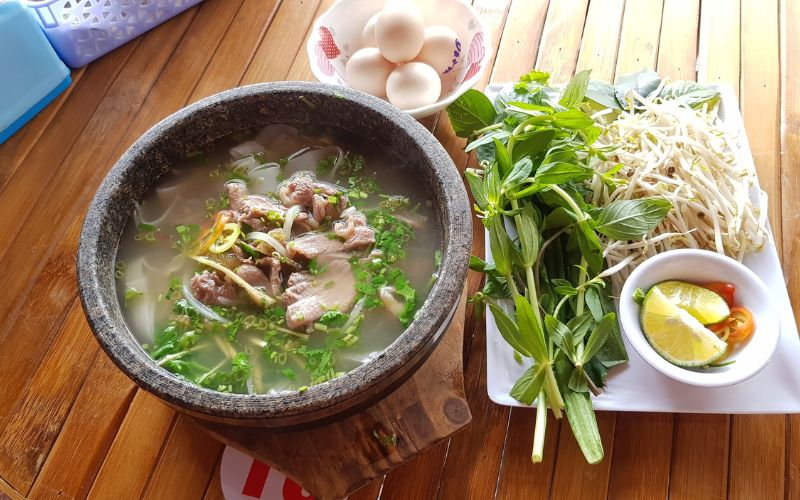
- Customizable garnishes: Lime wedges and chili peppers let families personalize their stone bowl pho. Lime adds vitamin C and helps absorb iron from meat, while chili offers a mild heat and anti-inflammatory benefits that can also support metabolism.
How Stone Bowl Pho is Made
The preparation of stone bowl pho requires careful attention to both traditional cooking techniques and modern safety considerations, ensuring that families receive authentic flavors while maintaining the highest standards of food safety and quality.
- Bone Preparation (24 Hours in Advance): The broth for stone bowl pho is prepared a full day in advance, starting with blanching beef or chicken bones to remove impurities. The bones are then roasted to bring out rich flavors and a deep amber color, forming the flavorful base of high-quality pho.
- Aromatic Spice Treatment: To enhance the broth, aromatic spices for stone bowl pho are dry-roasted in small batches to release their oils and deepen their aroma. They’re then wrapped in cheesecloth for easy removal after simmering, allowing full flavor infusion without leaving bits in the soup.
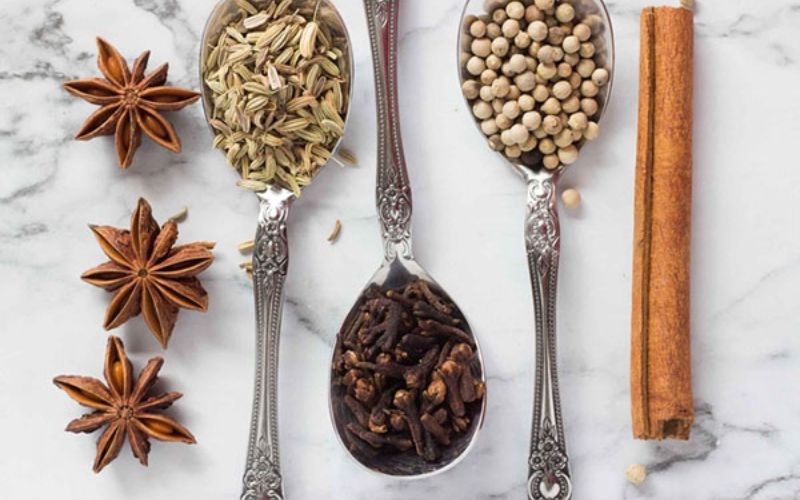
- Slow Simmering (12–18 Hours): The soul of stone bowl pho lies in its slow simmering process, lasting 12–18 hours. Gentle heat draws out nutrients and deep flavors from the bones and spices, while careful temperature control keeps the broth clear, aromatic, and rich in collagen and protein.
- Stone Bowl Heating & Safety Protocols: Preparing stone bowl pho safely involves using food-grade stone bowls heated to 400–500°F in special ovens. This process requires precise timing and strict safety measures to ensure the bowls retain heat well without posing risks, with trained staff handling and serving them carefully.

- Fresh Ingredient Preparation: Fresh ingredients for stone bowl pho are handled with care to keep their nutrients and visual appeal. Rice noodles are made fresh daily and portioned properly, while herbs are washed, checked, and prepped just before serving to ensure freshness and food safety.
- Protein Preparation: Proteins in stone bowl pho are prepared with both safety and texture in mind. Beef is thinly sliced against the grain for tenderness, and chicken is pre-cooked to the right temperature. The thin cuts let the meat cook quickly in the hot bowl, ensuring it’s safe and delicious.

- Assembly and Final Presentation: Assembling stone bowl pho involves careful timing to achieve both safety and the iconic sizzle. Fresh noodles go into the hot stone bowl first, followed by proteins, then hot broth. This order ensures everything heats properly while delivering the signature steaming, sizzling presentation.
More information: Homemade pork pho: How to create Vietnamese dish
The Stone Bowl Pho Serving Experience
Stone bowl pho offers more than just a meal—it creates an engaging, multisensory dining experience that transforms everyday family dinners into memorable cultural moments. The dramatic sizzle, rising steam, and rich aroma immediately capture attention, encouraging families to slow down, enjoy their food, and connect with one another. This interactive presentation not only promotes healthy eating habits but also sparks curiosity in children, making them more willing to try new foods and appreciate Vietnamese cuisine.

Beyond the visual and sensory appeal, stone bowl pho also supports family bonding and cultural education. Parents can use the meal to teach children about traditional dining etiquette, the use of chopsticks, and the meaning behind shared meals. While the heated stone keeps the food warm longer—accommodating both fast and slow eaters—safety remains a priority. Clear guidance and supervision help young diners enjoy the experience responsibly, turning each meal into a safe, enriching, and lasting memory.
Customizing Your Stone Bowl Pho
Stone bowl pho is highly versatile, letting families tailor each bowl to fit personal tastes, dietary needs, or nutrition goals. This flexibility makes it a perfect choice for households with different preferences while still preserving the dish’s authentic Vietnamese essence.
Personalizing with Various Toppings and Condiments
Stone bowl pho offers a high level of customization, allowing each family member to personalize their bowl with a variety of traditional condiments, toppings, and proteins. Options like hoisin sauce, sriracha, fish sauce, and lime juice provide different flavor profiles—from sweet and tangy to spicy and savory—catering to individual taste preferences. Parents can use these choices to help children explore Vietnamese flavors while also guiding them toward balanced nutrition. Fresh toppings like bean sprouts, Thai basil, mint, and cilantro not only boost visual appeal but also enhance the dish with vitamins, antioxidants, and digestive support.

Customizable proteins and vegetables make stone bowl pho adaptable to different dietary needs. Families can choose from lean beef, chicken, tofu, or plant-based alternatives, ensuring everyone—from meat-lovers to vegetarians—has a nourishing option. Add-ins like bok choy and mushrooms increase nutritional value and introduce kids to diverse textures and tastes. Even the noodles can be tailored, with alternatives like shirataki or sweet potato noodles available for those seeking low-calorie or nutrient-rich options. This level of flexibility makes stone bowl pho both a healthful and inclusive meal for the whole family.
Vegetarian and Vegan Adaptations
Stone bowl pho can be easily adapted for vegetarian and vegan diets without losing its rich flavor or cultural authenticity, making it an inclusive meal for the whole family. Instead of meat-based broths, vegetarian versions use roasted vegetables like onions, carrots, celery, and mushrooms to create deep, umami-rich flavors. Additions like kombu seaweed and dried shiitake mushrooms enhance the savory profile while providing nutrients such as iodine, vitamin D, and essential minerals—key for healthy development in children.
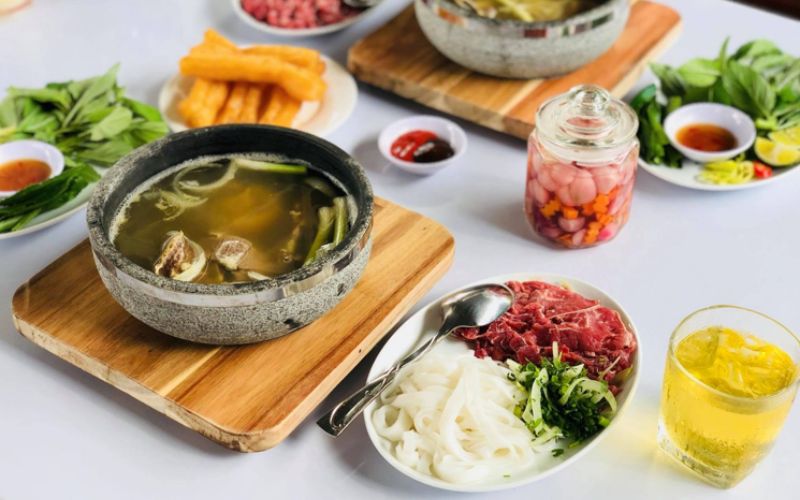
Plant-based proteins like tofu, tempeh, and seitan offer a variety of textures and nutritional benefits suitable for different preferences. Tofu supplies complete protein and isoflavones, tempeh adds probiotics for gut health, and seitan mimics the chewiness of meat. Nutritional yeast can be included for a natural source of vitamin B12, supporting balanced vegan diets. Additional toppings such as edamame or hemp seeds ensure protein adequacy while keeping the vibrant, herb-filled nature of pho intact—perfect for growing kids and plant-based households alike.
Allergen-Friendly Options
Stone bowl pho is highly adaptable for families managing food allergies and sensitivities, offering safe, nourishing meals without compromising flavor or authenticity. Gluten-free versions are easily achieved by using traditional rice noodles and ensuring all broths and condiments are free from wheat-based ingredients. The dish is naturally dairy-free, aligning with traditional Vietnamese recipes, making it ideal for those with lactose intolerance. For nut allergies, families should confirm that spices and sauces are processed in nut-free environments to avoid cross-contamination.

Additional modifications include soy-free and low-sodium options. Soy-free versions can substitute traditional soy sauce with coconut aminos or rely on fish sauce for umami depth. Families reducing salt intake can emphasize fresh herbs and spices to maintain flavor without excess sodium. The heated stone bowl method enhances these adaptations by preserving warmth and deepening flavor, ensuring that allergy-conscious recipes remain both safe and satisfying for every family member.
Conclusion
Stone bowl pho is more than just a nourishing meal—it’s a meaningful way for families to bond, explore Vietnamese culture, and support healthy eating habits. With its dramatic presentation, customizable elements, and extended heat retention, stone bowl pho transforms mealtime into a memorable, multisensory experience for children and adults alike.


 Tiếng Việt
Tiếng Việt